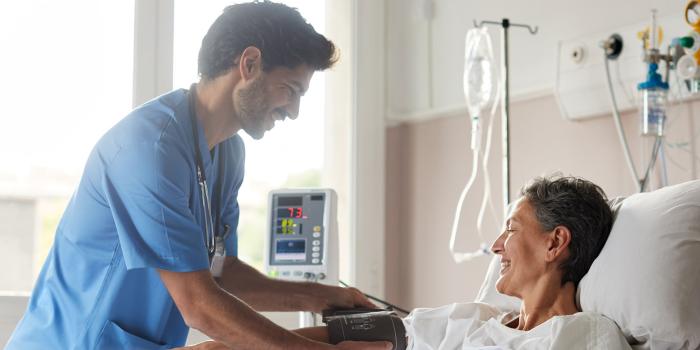More than 42 million Americans live with a movement disorder. Proper diagnosis is key to developing a personalized treatment plan that can help control and manage your symptoms. Our neurologists and neurosurgeons specialize in movement disorders, and work collaboratively with rehabilitation specialists for improved function and surgeons for placement of deep brain stimulation electrodes, when appropriate.
Our neurologists diagnose and treat:
- Parkinson’s disease
- Tremors
- Dystonia
- Huntington’s disease
- Spasticity
- Tourette Syndrome
Non-Surgical Care for Movement Disorders
If you live with a movement disorder, the first step in treatment is a non-surgical approach to managing your symptoms. Depending on your symptoms and the impact the symptoms have on your daily life, your treatment may include:
- BOTOX® injections
- Medication management
- Lifestyle changes and support
Movement Disorder Procedures and Surgery
Sometimes medication isn’t enough to give you relief from the debilitating symptoms you experience with a movement disorder. Our neurologists work collaboratively with neurosurgeons to provide Deep Brain Stimulation (DBS).
DBS uses surgically implanted electrodes to deliver electrical stimulation to specific areas of the brain that control motor function. Using advanced computer brain mapping, our neurosurgeons locate the precise regions of the brain that are generating the abnormal nerve signals and affecting movement. By blocking those nerve signals, DBS helps give you relief from tremor and other symptoms — improving your quality of life.
Rehabilitation to Improve Movement and Speech
Through specialized rehabilitation therapy and voice training, therapists can help retrain your brain to “go big” and “get loud.” Our therapists use the Lee Silverman Voice Treatment (LSVT) Loud and Big to improve movement, speech, and swallowing for people living with Parkinson’s Disease.
Parkinson’s disease can challenge your perception of how you move and talk. Loud and Big therapy helps retrain your brain to think big when walking or moving and speak loudly when talking. By training your brain to think differently, you can improve function, speech, and swallowing.
LSVT Loud and Big therapy is an intensive outpatient treatment plan that can then be used at home to see continued improvement. Studies have shown that patients with Parkinson’s disease at any stage can benefit from intensive rehabilitation. LSVT Big and Loud therapy is especially effective soon after the disease is diagnosed.


